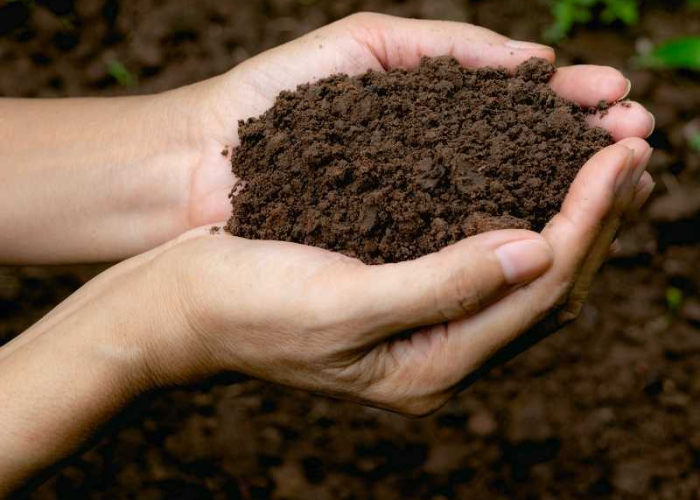Is dirt homogeneous or heterogeneous? It is a question that many people ask when they want to learn more about the composition of the soil beneath our feet. Dirt is an essential part of life, providing nutrients to plants and helping to regulate the water cycle. The answer to this question can help us understand the composition of dirt and how it functions within our environment.
Defining Homogeneous and Heterogeneous
Dirt is an interesting and complex material that can be classified in different ways. Generally speaking, dirt is a heterogeneous material, meaning it is composed of multiple different types of particles that are not uniformly distributed.
Dirt is composed of a variety of different organic and inorganic particles, including clay, sand, silt, rocks, and other materials. The type of particles present and their distribution throughout dirt can vary greatly depending on the environment from which dirt is sourced.
For example, dirt found in a garden may contain more organic matter and fewer rock particles than dirt found in a desert. In addition, the size of the particles present in dirt can also vary, with some particles being microscopic while others can be seen with the naked eye. This variety of particles and sizes is what makes dirt a heterogeneous material.
The Chemical Composition of Dirt
The chemical composition of dirt is an important factor in determining whether it is homogeneous or heterogeneous. Dirt is composed of a variety of elements, including clay, sand, silt, organic matter, minerals, and other materials.
Clay is composed of small particles of aluminum silicate, which are homogeneously distributed throughout the dirt. Sand is composed of particles of rock, which are also homogeneously distributed.
Silt is composed of particles of quartz and other minerals, which are also homogeneously distributed. Organic matter is composed of decomposed plant and animal matter, which are heterogeneously distributed throughout the dirt.
Minerals are composed of a variety of elements, which can be both homogeneously and heterogeneously distributed throughout the dirt. In conclusion, dirt can be both homogeneous and heterogeneous depending on the chemical composition of the individual components.
How Soil Fertility Is Affected by Dirt’s Composition
The composition of dirt is an important factor in soil fertility. Depending on the makeup of the dirt, it can be either homogeneous or heterogeneous. Homogeneous dirt is composed of the same material throughout, whereas heterogeneous dirt is composed of a combination of different materials.
Homogeneous dirt tends to have higher levels of fertility than heterogeneous dirt, as it contains the same nutrients throughout. Homogeneous dirt also tends to be more resistant to erosion, meaning it is better able to sustain the fertility of the soil.
Heterogeneous dirt, on the other hand, is more susceptible to erosion, as the different materials break down at different rates. This can result in a loss of nutrients, which can lead to soil fertility loss. As such, it is important to know the composition of dirt when attempting to maintain or increase soil fertility.
Visualizing Soil Composition
When it comes to visualizing soil composition, it’s important to understand the difference between homogeneous and heterogeneous soil particles. Homogeneous soil particles are the same throughout the entire sample, while heterogeneous soil particles are made up of different components.
Dirt is usually considered to be heterogeneous, as it contains various particles such as sand, silt, clay, organic matter, and stones. These particles vary in size, composition, and texture, and create a unique and complex structure.
The various particles interact with each other in different ways, and the result is a mix of different properties and textures. Soil is not a uniform material, and its composition can vary greatly depending on the type of soil and the location. As a result, dirt is typically considered to be heterogeneous in nature.
Biological Interactions in Dirt
Dirt is a complex mixture of organic and inorganic materials that supports a variety of biological interactions. These interactions provide an essential role in the soil’s overall health and fertility.
The composition of dirt is highly varied, making it difficult to classify it as homogeneous or heterogeneous. However, there are certain components that can be categorized as either homogeneous or heterogeneous.
Organic material, such as decomposed plant and animal matter, tends to be heterogeneous in nature. This material is composed of a variety of different particles, including bacteria, fungi, and other microorganisms.
These microorganisms, in turn, interact with each other and with the other particles in the dirt to form complex food webs and nutrient cycles. The microorganisms in the soil also help to break down organic matter and make nutrients available to plants.
Inorganic material, such as sand, silt, and clay, is homogeneous in nature. These particles are all composed of the same chemical elements and tend to be uniform in size and shape.
While this material does not interact with other particles and organisms in the same way that organic material does, it is essential for providing structure to the soil, allowing water and air to move through it.
Overall, dirt is a complex mixture of organic and inorganic materials that support a variety of biological interactions. While the organic material is heterogeneous and the inorganic material is homogeneous, the interactions between the two components create a unique and complex environment that supports plant growth and soil health.
Conclusion
Dirt is a heterogeneous substance. It contains a variety of components that vary in their characteristics, such as size, shape, and composition. Dirt can also contain a variety of living organisms, such as bacteria, fungi, and other microorganisms.
Additionally, dirt can have different properties depending on the soil type, climate, and other environmental factors. Furthermore, dirt can contain both organic and inorganic materials, making it a very diverse substance. Dirt is a complex mixture that has many diverse components, making it a heterogeneous substance.
